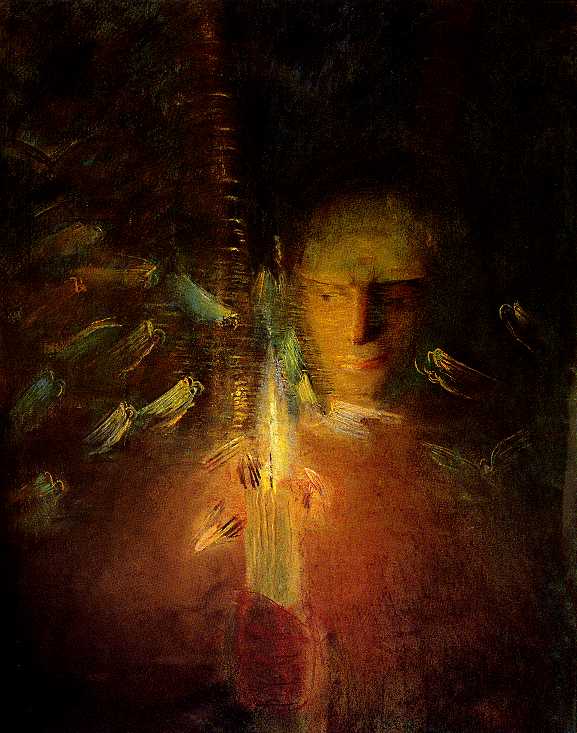Post by RocDoc on Nov 18, 2004 16:08:58 GMT -5
Whoa. Last posted on 9/11....we went to the beach in Indiana that day...got some great pictures there to prove it. I thought that someone here might appreciate this review...tho I'm ripping my hair out that we missed this free show, AND at a great venue...
New York avant-gardists offer rare treat
By Michael Cameron
Special to the Tribune
The new-music ensemble Bang on a Can was formed in the late 1980s as a collective of composers and musicians frustrated by the insularity of the new music scene and by the downtown-uptown divide that defined music in New York.
These boundaries have blurred in the years since, and rock and jazz incursions into the classical realm are now commonplace. If the aesthetic impulses that gave birth to the group now seem almost quaint, the need to expand the traditional audience base for classical music is as intense as ever.
Through the caprices of concert promotion, local fans of the group have had precious few chances to hear them live. Sunday's appearance in the Chicago Cultural Center was only the second area visit by the Bang on a Can All-Stars, the sextet at the core of the collective.
Until recently, Conlon Nancarrow's dazzling works for player piano could be enjoyed only through recorded realizations. Clarinetist Evan Ziporyn's arrangements of "Four Studies" graft rock and jazz sensibilities onto these gems.
Much of his music earns its considerable appeal through a delicate balance of the familiar and the evasive. Bassist Robert Black established a simple vamp in the opening movement, only to have it subverted by competing cross rhythms.
In the second study, a boogie bass line set the stage, untethered by standard harmonic patterns. Competing keys and metric irregularities brought to mind the work of Sun Ra and Frank Zappa, among others. Tap your foot at your own risk.
Ziporyn's own composition, "Dalem & Sangut," had a more settled quality, with tentative pitch centers and less angular cascades of sound. The second movement was assembled with overlapping layers. The third movement exuded the serene colors of David Cossin's Asian percussion, textured with opposing pedal points and ostinatos.
Phillip Glass' "Music in Fifths," a work nearly as emblematic of early minimalism as Terry Riley's "In C," is a 25-minute tour de force of mechanized perpetual motion. Guitarist Mark Stewart set a blistering pace, a challenge for his fellow musicians that was met through nearly superhuman concentration. With no room for spontaneity or nuance, the piece is not so much interpreted as reproduced. Nevertheless, it is one of Glass' best, a mesmerizing block of sound that left musicians and audience alike breathless.
The Brazilian jazz pianist and composer Hermeto Pascoal's "Arapua" was performed with a quicksilver bebop sensibility, modernized with unsettled chord changes. Pianist Lisa Moore and cellist Wendy Sutter excelled in high-flying solo turns.
The group will appear Tuesday, with Philip Glass, at the Krannert Center for the Performing Arts in Urbana.
New York avant-gardists offer rare treat
By Michael Cameron
Special to the Tribune
The new-music ensemble Bang on a Can was formed in the late 1980s as a collective of composers and musicians frustrated by the insularity of the new music scene and by the downtown-uptown divide that defined music in New York.
These boundaries have blurred in the years since, and rock and jazz incursions into the classical realm are now commonplace. If the aesthetic impulses that gave birth to the group now seem almost quaint, the need to expand the traditional audience base for classical music is as intense as ever.
Through the caprices of concert promotion, local fans of the group have had precious few chances to hear them live. Sunday's appearance in the Chicago Cultural Center was only the second area visit by the Bang on a Can All-Stars, the sextet at the core of the collective.
Until recently, Conlon Nancarrow's dazzling works for player piano could be enjoyed only through recorded realizations. Clarinetist Evan Ziporyn's arrangements of "Four Studies" graft rock and jazz sensibilities onto these gems.
Much of his music earns its considerable appeal through a delicate balance of the familiar and the evasive. Bassist Robert Black established a simple vamp in the opening movement, only to have it subverted by competing cross rhythms.
In the second study, a boogie bass line set the stage, untethered by standard harmonic patterns. Competing keys and metric irregularities brought to mind the work of Sun Ra and Frank Zappa, among others. Tap your foot at your own risk.
Ziporyn's own composition, "Dalem & Sangut," had a more settled quality, with tentative pitch centers and less angular cascades of sound. The second movement was assembled with overlapping layers. The third movement exuded the serene colors of David Cossin's Asian percussion, textured with opposing pedal points and ostinatos.
Phillip Glass' "Music in Fifths," a work nearly as emblematic of early minimalism as Terry Riley's "In C," is a 25-minute tour de force of mechanized perpetual motion. Guitarist Mark Stewart set a blistering pace, a challenge for his fellow musicians that was met through nearly superhuman concentration. With no room for spontaneity or nuance, the piece is not so much interpreted as reproduced. Nevertheless, it is one of Glass' best, a mesmerizing block of sound that left musicians and audience alike breathless.
The Brazilian jazz pianist and composer Hermeto Pascoal's "Arapua" was performed with a quicksilver bebop sensibility, modernized with unsettled chord changes. Pianist Lisa Moore and cellist Wendy Sutter excelled in high-flying solo turns.
The group will appear Tuesday, with Philip Glass, at the Krannert Center for the Performing Arts in Urbana.





